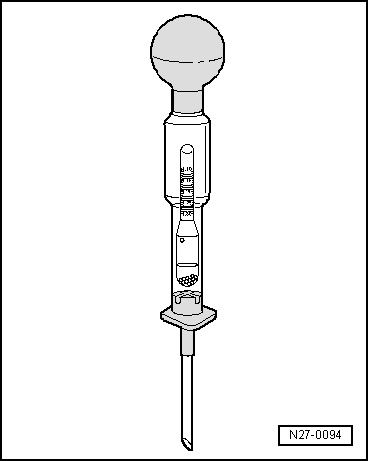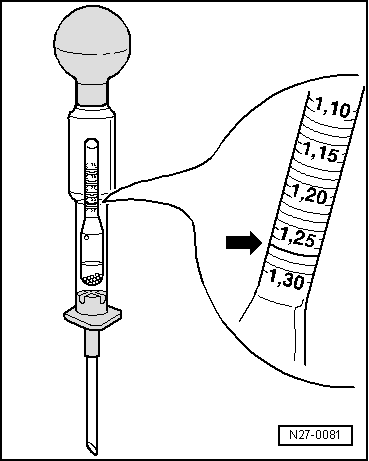Golf Mk3
 |
|
|
The electrolyte specific gravity test in conjunction with the battery load test provides specific information of the battery condition. Special tools, testers and auxiliary items
Notes:
|
 |
|||||||||||||||||||||
Deviations in electrolyte density Notes:
Example of unacceptable deviations in specific gravity:
Deviations in electrolyte density in The following values must be attained: | |||||||||||||||||||||
 |
|||||||||
Warning!
It is essential that genuine and proper battery sealing plugs be used to ensure that the differing battery cover systems are sealed correctly. Only use genuine sealing plugs of same construction if lost or damaged. The plugs must be equipped with an O-ring seal. |
